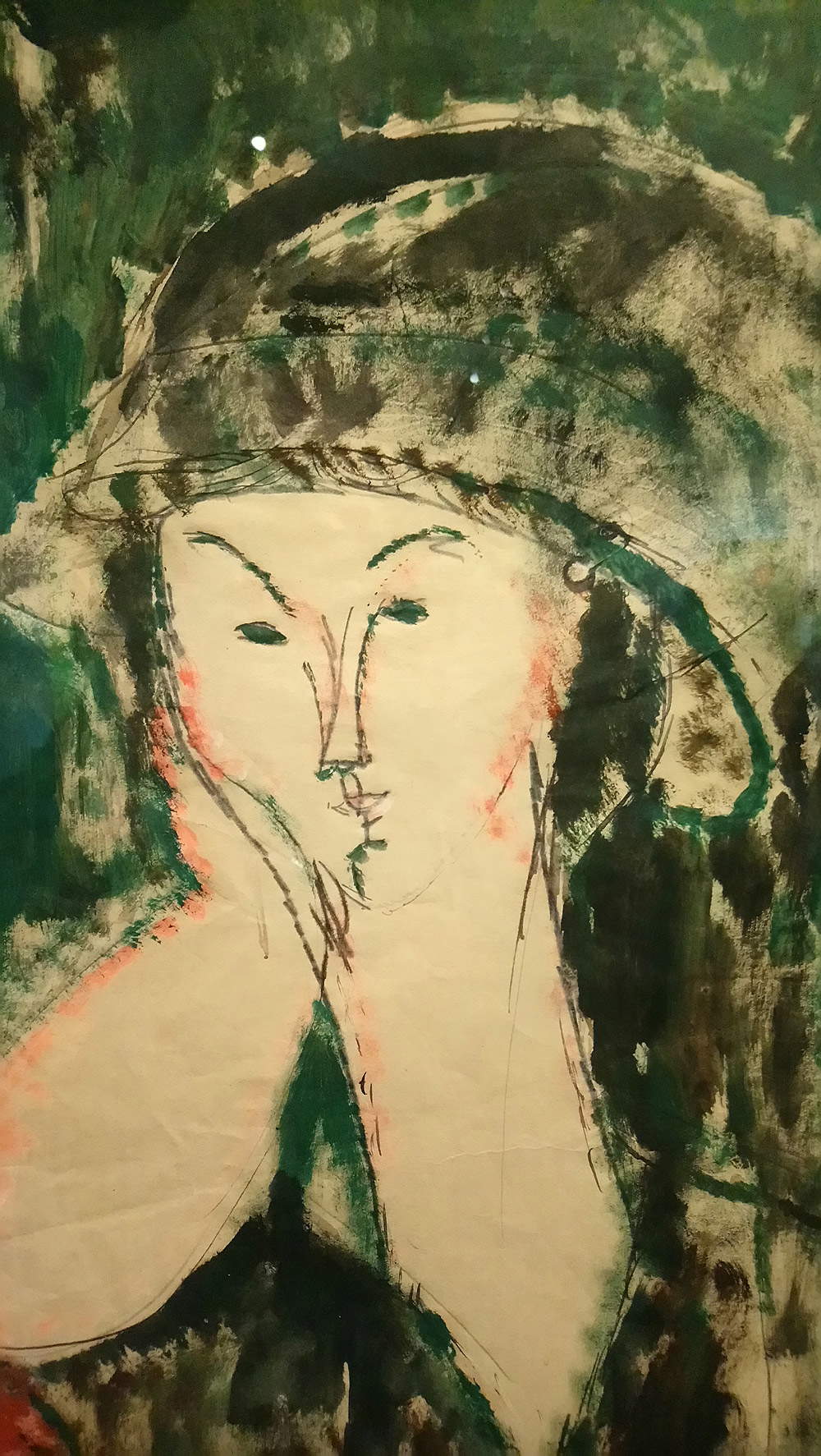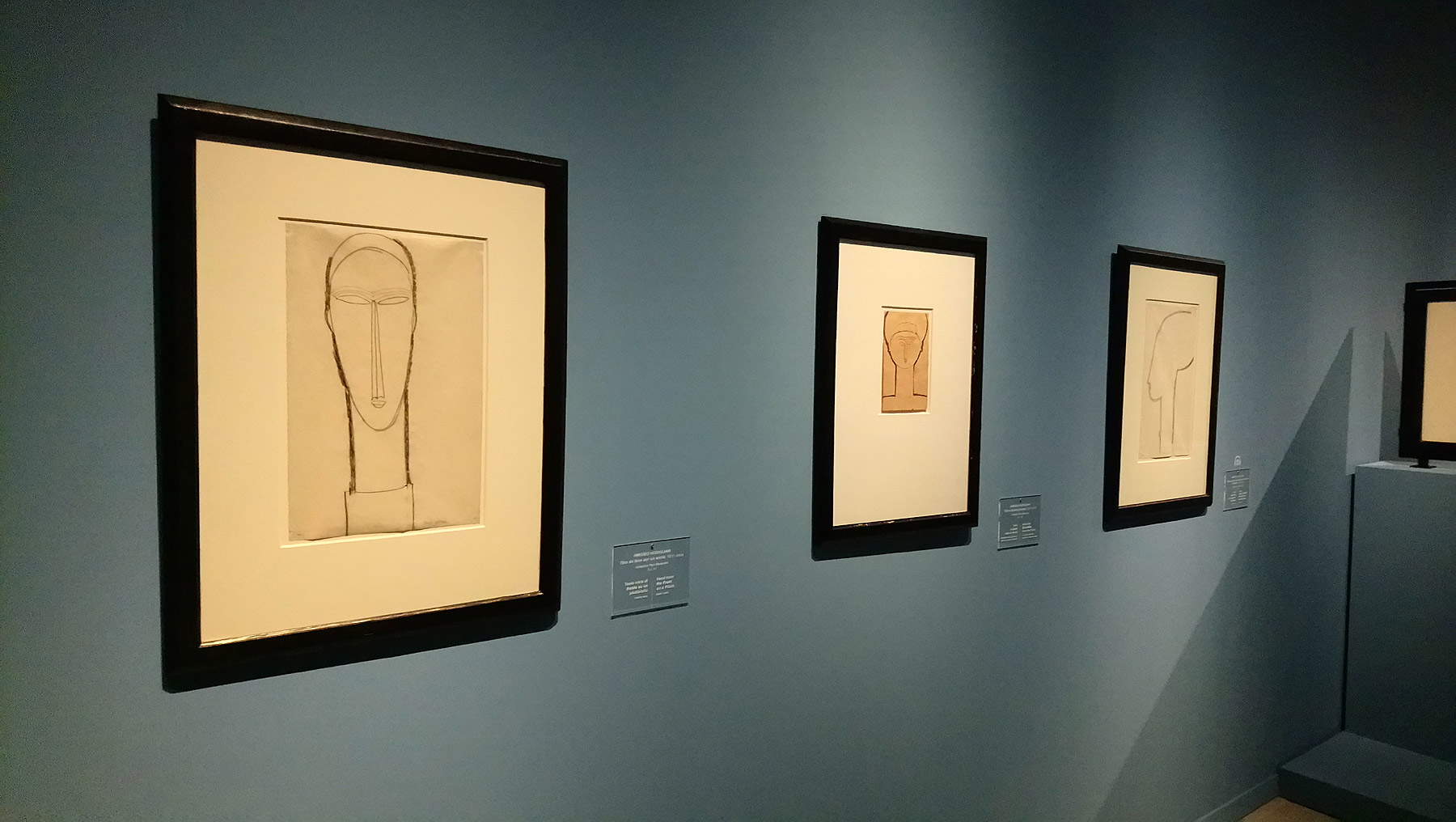Sixty thousand visitors in two months of opening: such is the proportion of the flow that has so far affected the exhibition Modigliani and the Montparnasse Adventure, which the city of Livorno has set up in the halls of the Museo della Città to pay homage to its most illustrious artist, Amedeo Modigliani, on the centenary of his death, which falls in this 2020. A meritorious initiative, about which we had the opportunity to speak more fully in a detailed review by Ilaria Baratta published a few days ago in our magazine: yet, we are convinced that Italy is doing too little for the fateful anniversary.
The issue has been denounced on several occasions, on Artslife, by our colleague Massimo Mattioli, who bluntly states that Italy is “killing Modigliani,” since neither the Ministry of Cultural Heritage nor the major museums have scheduled exhibitions that manage to celebrate the anniversary in the most fitting way. And we can be sure that even if something were to be leaked in the near future, it would certainly be an exhibition of little importance, since a scientifically impeccable project, with high-level loans (it should be remembered that Modigliani’s masterpieces are scattered in museums all over the world and can be found on almost every continent), with a scientific committee capable of working on a publication that would be the fruit of new research and could constitute a milestone in the production on the artist, would require not months, but years of work and preparation. Add to this the fact that the curator of the Livorno exhibition, Marc Restellini, among the most authoritative experts on Modigliani, has received several proposals from abroad but, apart from Livorno, nothing from Italy.
By now it is too late to think of a large-scale event (at least for 2020: we hope, however, that the institutions can get to work for the years to come because, as we shall see, there is really a great need for a serious and timely exhibition on Modigliani), and we can ask ourselves about the reasons for so much lack of interest, which seem to be many. Meanwhile, a premise is needed: Modigliani is one of the artists most affected by the phenomenon of blockbuster exhibitions, and it is easy to understand why (just think of his biographical story: troubled or eccentric artists, from Caravaggio to Frida Kahlo, from Picasso to Jackson Pollock, typically are the ones that attract the most public interest and consequently are the ones that sell the most). And as for Modigliani, between multisensory “experiences” and more or less large and more or less serious exhibitions, one loses count of how much has been dedicated to him in recent years (and never with events that really lived up to the hype). Second, Modigliani is probably the most falsified author in art history: in their book L’affare Modigliani (The Modigliani Affair), authors Claudio Loiodice and Dania Mondini write that “of Modigliani [...] it is said that he produced more when he was dead than when he was alive. There are 337 paintings recorded in the catalog of Ambrogio Ceroni, still the most accredited, while about 1,200 works circulate on the market under his signature.” Moreover, according to appraiser Isabella Quattrocchi and collector Carlo Pepi, even among those 337 paintings that are part of Ceroni’s catalog there would be “paintings and a sculpture believed to be fakes by Jeanne Modigliani,” the artist’s daughter. As a result, “not much is left of Amedeo Modigliani’s work today.”
 |
| Amedeo Modigliani, Béatrice Hastings. Le menton appuyé sur la main droite, detail (1915; oil on paper, 42 x 25 cm; Jonas Netter Collection) |
 |
| Images from the exhibition Modigliani and the Montparnasse Adventure. Masterpieces from the Netter and Alexandre Collections |
 |
| Images from the exhibition Modigliani and the Montparnasse Adventure.Masterpieces from the Netter and Alexandre Collections |
 |
| Images from the exhibition Modigliani and the Montparnasse Adventure.Masterpieces from the Netter and Alexandre Collections. |
Having advanced this preamble, one may think that there are mainly two reasons why Italy will not celebrate Modigliani’s centenary with a major exhibition that brings together in our country the best (and most certain) achievements of the artist from Livorno (always stressing that exhibitions such as the one in Livorno are welcome, also because they are able to exhibit real works by Modigliani, on which no doubts regarding authenticity hang): the first is of a cultural order, while the second concerns contingent events.
Ever since the first critical statement at the 1930 Biennale, ten years after his death, insiders have continued to be divided over Modigliani, and even today the situation is not that far from what it was then. On the occasion of that Biennial, there were not a few critiques: for Ojetti, Modigliani was simply “the painter of the long necks,” Francesco Sapori wrote that his works “reveal a labored synthesis, closer to a tormented style than to a fruitful result,” Arturo Lancellotti asserted that in Modigliani “there is nothing to foreshadow the artist, not drawing, nor psychological penetration, not even by idea color,” and Enrico Thovez demolished him mercilessly (“they are twelve clumsy and lopsided heads, such as a child of five who has absolutely no disposition for drawing can draw and paint”). More recently, beyond the criticisms of De Chirico, who called him a “mediocre and banal painter in the late nineteenth and early twentieth century style” (and De Chirico’s judgments are to be taken with a grain of salt since, as is well known, he was less than tender with a great many of his colleagues), there are the at least cold opinions of such personalities as Giancarlo Marmori, Federico Zeri, and Pietro Scarpellini, and even in recent years there have been heavy criticisms: for example, the Guardian’s art critic Jonathan Jones, on the occasion of the major exhibition at the Tate in 2017 branded Modigliani as a “slightly silly artist,” or Vittorio Sgarbi, who considered him anything but a revolutionary artist. There has certainly been no shortage of those who, on the other hand, have woven Modigliani’s praise (at the head of the long list of admirers are, just to name two, Lionello Venturi and Maurizio Calvesi), but it would be false to suggest that a unanimous chorus rises towards the Leghorn artist: and this situation certainly conditions the debate around his figure in a negative way, and ends up creating a clear discrepancy between the almost unconditional love that the general public has for “Modì” and the scant interest shown in him by the academy.
As for current events, they are a well-known fact: hundreds of fakes crowd collections all over the world, are displayed at exhibitions set up everywhere, and leap to national headlines when they are discovered. And behind these circles lie illicit activities (scams, international money laundering), so much so that Marc Restellini himself has reported on several occasions that he has been threatened with death for his work to establish the authenticity of Modigliani paintings in circulation (the French critic has for years been engaged in the drafting of the catalog raisonné of Modigliani, first in collaboration with the Wildenstein Institute in Paris, and then, since 2015, on his own). It may therefore be safe to assume that there is a certain caution around the figure of Modigliani. But it is precisely in order to bring order to this unhealthy welter and to restore dignity to the artist, that an exhibition of high scientific value would be more necessary than ever: not least because the mass of forgeries and dubious exhibitions risk severely damaging Modigliani’s reputation. A danger that needs to be avoided, but there is only one way to avoid it: serious scientific work.
The difficulties mentioned above could have been overcome by the establishment of a national committee for Amedeo Modigliani (a hypothesis, this one, also suggested by Mattioli): a body capable of composing scientific commissions that would have worked to establish, once and for all and under the aegis of the Ministry of Culture, a canon of Modigliani’s works. And at the end of this work, it would have been appropriate to order a serious, unimpeachable exhibition, based on a solid scientific project, to offer, to a public that has too often been offered useless exhibitions (this at least in the best of hypotheses: for the rest, there are ongoing trials), a review capable of demonstrating who Amedeo Modigliani really was and what he really painted. If it is true that nowadays art history is made with birthdays (we saw it last year with Leonardo da Vinci, we will see it this year with Raphael), then an important opportunity has been missed for Modigliani, an opportunity that, at the moment, has been taken only by Livorno, with an initiative that, despite its limitations (it is more an exhibition on the artists of Montparnasse than on Modigliani, the quality is discontinuous, it dialogues little with the Fattori Museum, which would also provide a visitor with a further opportunity for in-depth study), represents a good tribute for the centenary, and above all gives the public a way to admire real paintings by Modigliani.
And an opportunity that could be taken, however, by France, where, at the moment, scientific analyses are underway on twenty-five paintings and three sculptures by Modigliani, that is, on all the painter’s works in French public collections. It is a study entitled Les secrets de Modigliani, launched by the LaM (the Musée d’art moderne, d’art contemporain et d’art brut of the city of Lille) and promoted by the CNRS (Centre national de la recherche scientifique, the counterpart of our CNR) and the C2RMF (Centre de recherche et de restauration des musées de France, the central institute of restoration): the project, born in 2017 on the wave of the great success of the exhibition Amedeo Modigliani, l’oeil intérieur that attracted two hundred thousand visitors to the LaM, will end just this year, when the results will be released. Can we bet that, in order to present the results of the study and availing itself of paintings from its public collections (as well as, perhaps, of important loans from abroad), France will organize that major exhibition on Modigliani in which Italy seems not to be interested?
Warning: the translation into English of the original Italian article was created using automatic tools. We undertake to review all articles, but we do not guarantee the total absence of inaccuracies in the translation due to the program. You can find the original by clicking on the ITA button. If you find any mistake,please contact us.